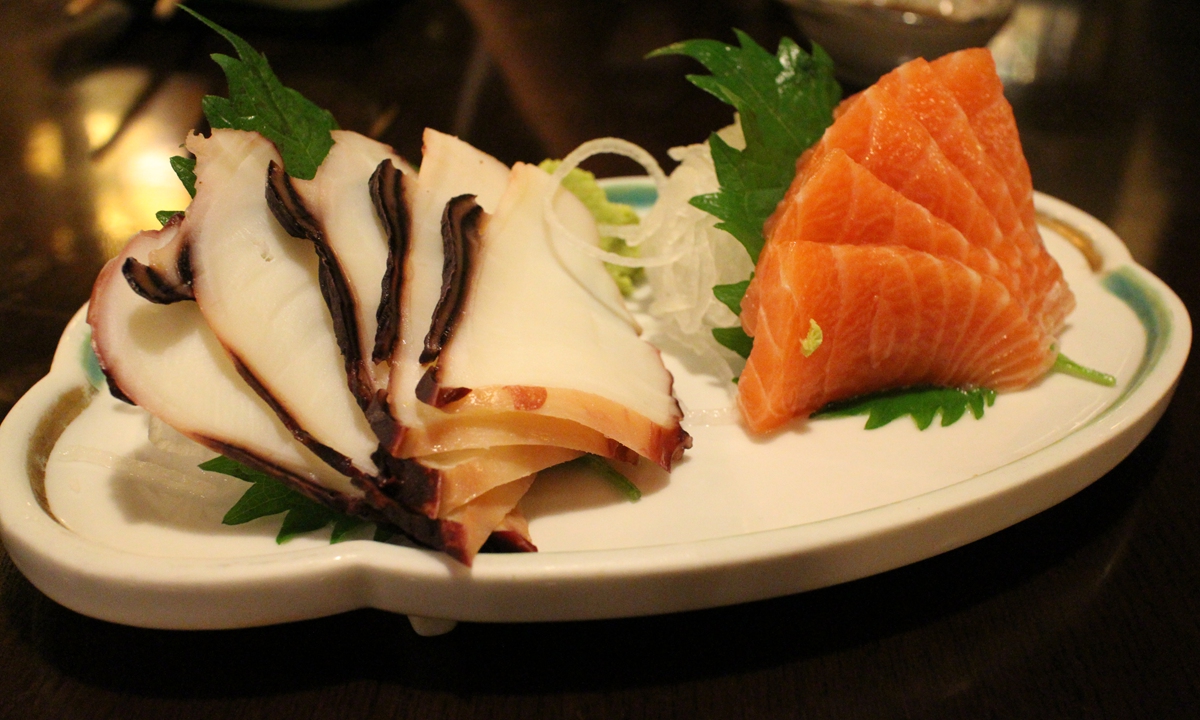Japan’s clever ways in dealing with food waste
Source: Xinhua Published: 2020/9/10 17:23:40

Sukiyaki Photo: IC

A plate of sushi Photo: IC

Conch slices and salmon sashimi Photo: IC
The Japanese government has been urging the public to reduce wasted food for years as the country wastes a staggering amount of food every year despite its low level of food self-sufficiency rate.
In the long-time search for a solution to the problem, the Japanese society has come up with some clever methods.
Japan produces about 27.59 million tons of food waste each year, according to estimates by the Ministry of Agriculture, Forestry and Fisheries and the Ministry of the Environment. Apart from the food waste that can be reused as feed, 6.43 million tons of edible food is thrown away, equivalent to about 51 kilograms of waste per person every year.
More than half of the wasted food comes from related enterprises, mainly from substandard food, returned food, food leftovers from unsold products and in restaurants. The rest come from household leftovers, food thrown away before being eaten, and food that is over-processed and wasted during cooking.
In recent years, smartphones have played a major role in cutting down on wasted food. In 2018, a mobile App called TABETE, which means "Please eat" in Japanese, was launched in cities like Tokyo and Osaka, aiming to use digital technology to "save" food that might go to waste. The App is now available in more than 500 stores and has more than 200,000 registered members.
People can download the App and log in for free to become a member. The App allows stores to post pictures and prices of foods that need to be "saved," while consumers can search for nearby stores, place an online order, pay for them and then pick them up at an agreed time.
Due to the influence of TABETE, some local administrations in Japan have also taken the initiative to cooperate and use the platform to promote the reduction of wasted food. They also mobilized local shops to become TABETE members, showing food materials they might waste and appealing to the public to "save" them.
In March, people in Hamamatsu, Shizuoka Prefecture began dining out less due to the COVID-19 epidemic. Many hotel and restaurant reservations in Hamamatsu were canceled, and a large amount of food prepared by restaurants was about to be wasted. Relative organizations there appealed through TABETE to people to buy the food.
The problem of wasted food is very complex, which may be caused in a large amount during production, processing, storage, transportation, selling and final consumption. While TABETE is targeting waste during selling, the nonprofit organization Mottainai Food Center is trying to curb waste caused by shelf life issues.
Food purchased in Japanese stores is usually packaged in containers with "consumption period" or "savory period." According to Japanese authorities, the "consumption period" refers to the period during which food is safe to eat, while the "savory period" is the best time for fresh tastes. In short, food that passes the "savory period" may not taste as good, but is still safe to eat, a difference not known by many, leading to unnecessary waste.
In light of this phenomenon, Mottainai Food Center collects these foods through purchase or donations, and sell them through its operating chain "ecoeat" at lower prices to aid welfare facilities, charities and people with difficulties, reducing waste and helping those in need at the same time.
"I shop in ecoeat a lot. It has a huge variety of products that are super cheap... The idea that they are contributing to curbing wasted food is also fantastic. By shopping here, I feel I'm also contributing to environmental protection," a Japanese netizen said online.
Newspaper headline: Please eat
Posted in: FOOD,CULTURE & LEISURE